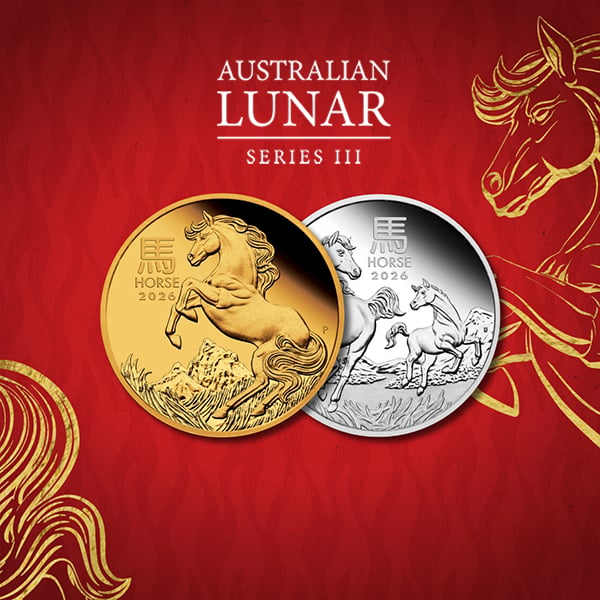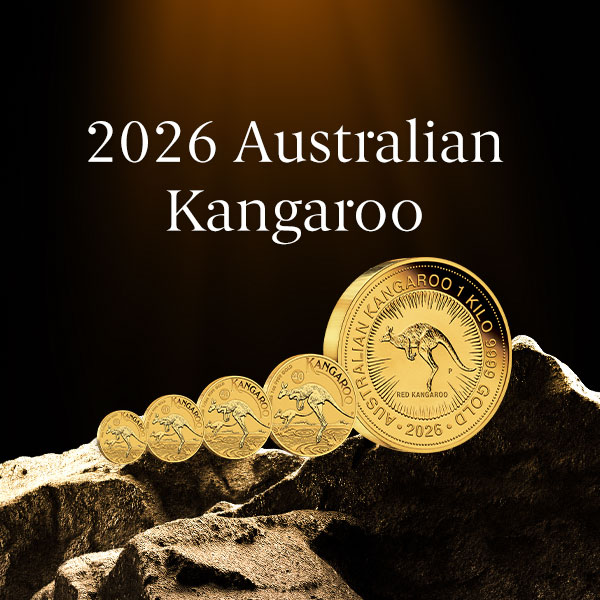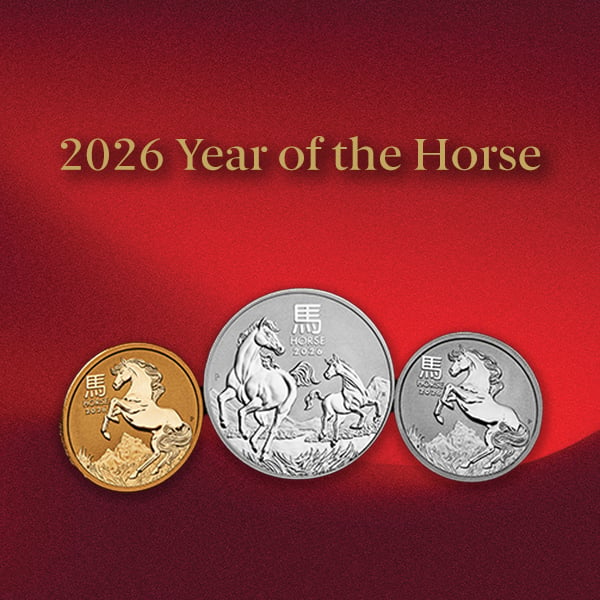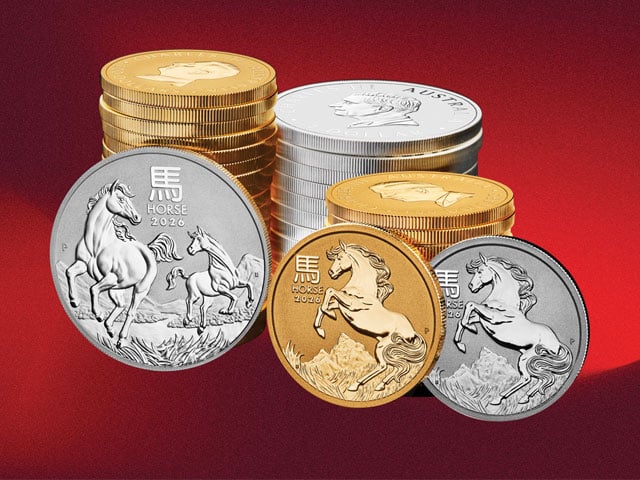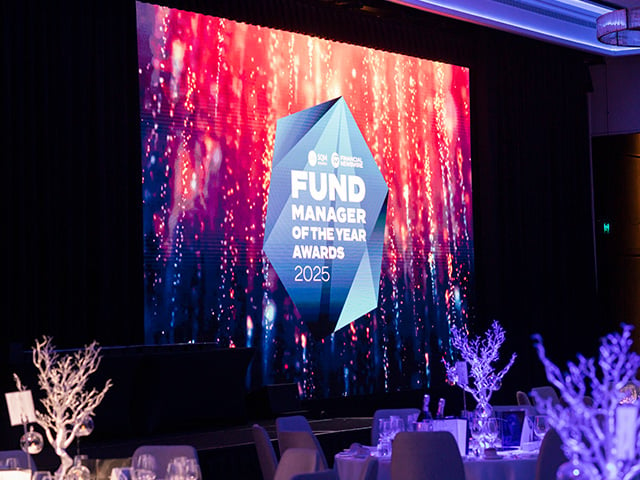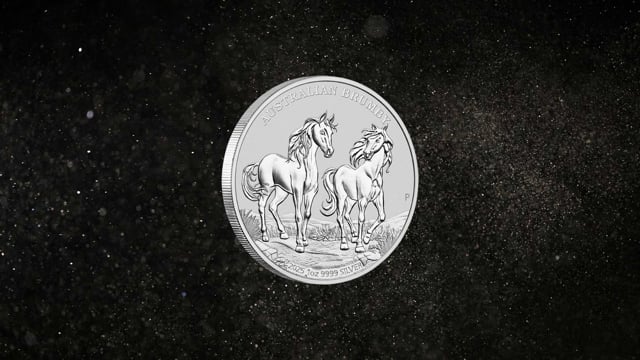Gold hits all-time high in Australian dollars
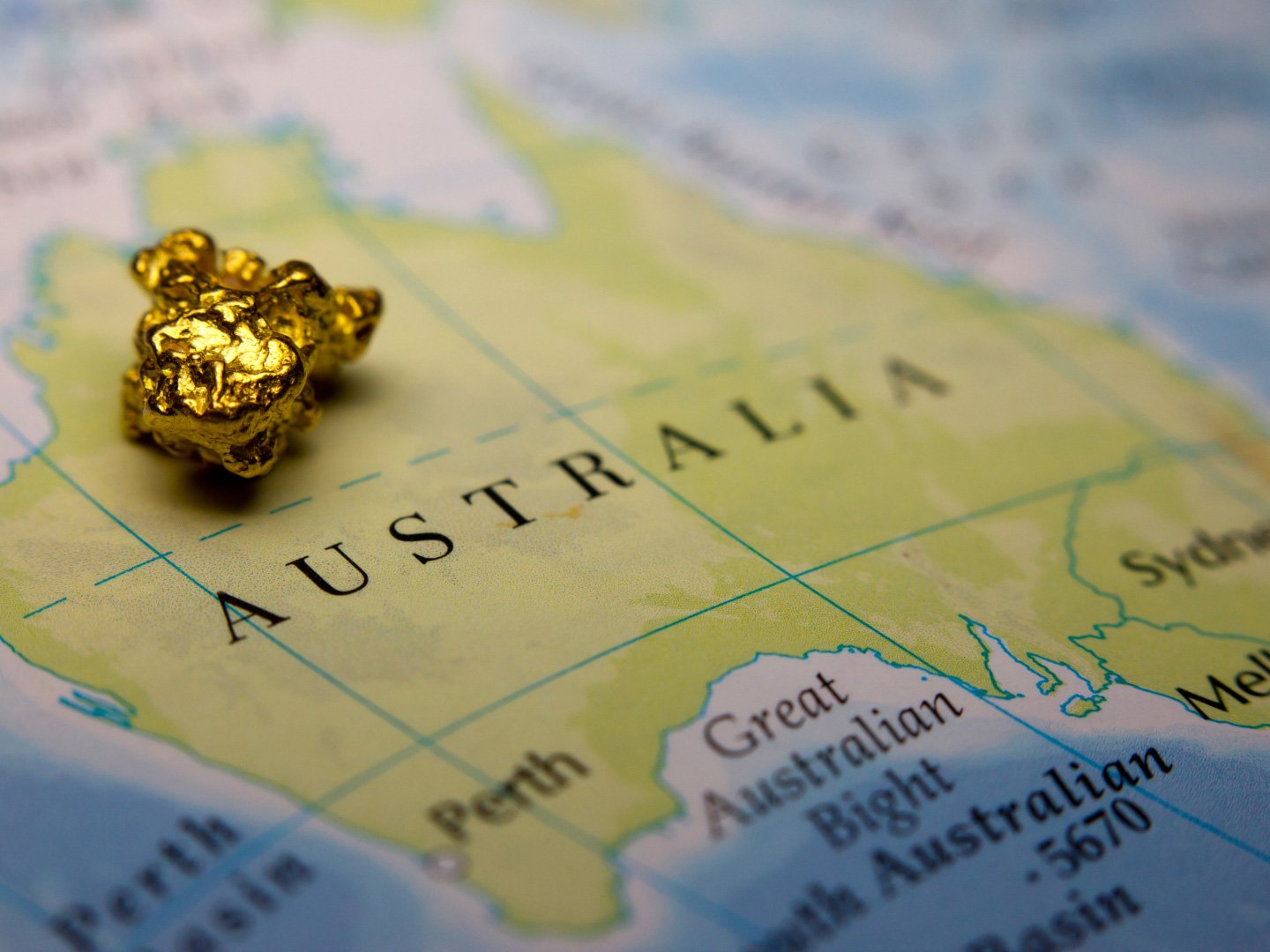
The Australian dollar gold price hit an all-time high in February, rising 2.76% to finish the month at AUD 2441 per troy ounce.
Key points for February:
- Prices in US dollars ended the month essentially flat, after trading above USD 1,650 per troy ounce during the month.
- Silver underperformed, down 7% in USD terms, with the Gold to Silver ratio (GSR) finishing the month above 95, the highest figure in approximately 30 years.
- Financial markets were driven by growing fears over the spread of Coronavirus in February, which has now spread to over 50 countries worldwide.
- Global equity markets suffered large falls as the Coronavirus crisis intensified. This included the Australian Stock Market, which in the last week of February suffered its largest weekly fall since October 2008.
- Precious metals were not the only safe haven assets to see increased demand, with US and Australian 10-year bond yields hitting all-time lows in February 2020.
- Gold ETF holdings soared to all-time highs during February, whilst the value of precious metal holdings held by The Perth Mint depository exceeded AUD 5 billion, a new record.
The month in review – February 2020
February was one of the most volatile months in a decade for financial markets, with large moves seen in equities, commodities, fixed income assets and precious metals. The driver of these moves was the increasing fear that markets have about the spread of the coronavirus around the globe.
Far from being contained, large numbers of confirmed cases showed up in all parts of the world, from Korea to Italy to Iran, with the disease seemingly spreading faster outside of China than within it.
Countries stepped up their preparations to deal with any fallout from a further spread of the virus, with Australia initiating its emergency response plan, meanwhile the World Health Organisation said the outbreak had reached a “decisive point” with Coronavirus having “pandemic potential.”
Given these developments, the volatility seen in financial markets was to be expected, with precious metals benefiting from the fear gripping markets. At one point during February gold traded above USD 1,650 and AUD 2,500 per troy ounce, a new all-time high in Australian dollar terms.
The gains were not maintained however, with the metals suffering large losses on Friday 28th. Gold fell by approximately 4% on the day to end the month flat in USD terms, whilst silver fell by close to 8%, as some investors locked in the profits, whilst others were forced to liquidate their precious metal holdings to cover losses in other parts of their portfolios.
Despite the sharp correction to close out the month, it has still been a strong start to 2020 for gold, with the yellow metal rising by 12.99% in AUD terms, and 4.54% in USD terms in the first two months of the year. Silver has now fallen by almost 7% in USD terms, with the Gold to Silver Ratio (GSR) finishing February 2020 at 95, the highest level seen in the last 20 years.
Fixed income securities found favour during February. Australian and US 10-year government bonds ended the month yielding just 0.68% and 1.15%. In percentage terms, the declines in the yields on these securities were amongst the largest on record, with both falling to all-time lows.
The news was not so positive for share markets, which suffered one of their worst months on record. According to Deutsche Bank, the 10% fall in US equities that occurred in just six trading days in late February was the fastest on record. European stocks also fell sharply, according to Commsec, whilst the last week of February saw the ASX 200 suffer its biggest weekly fall since October 2008.
Many share markets around the world have now erased all their gains seen in the first few weeks of 2020, with the ASX 200 for example now trading back at levels seen in June of last year.
ETF holdings saw record inflows
The strength in the gold price for most of February, and the deteriorating economic and financial market outlook saw a flood of investor demand, with gold ETFs seeing net inflows for 25 days straight in February. This is the longest run on record, with total holdings in global gold ETFs hitting all-time highs.
The Perth Mint saw the strength of this rising gold ETF demand first hand, with holdings in our ASX listed product Perth Mint Gold (ASX: PMGOLD) increasing by over 12% in 2020 thus far. This growth helped total client holdings of precious metals stored with The Perth Mint top AUD 5.1 billion for the first time, testament to the growing interest in precious metals from investors both in Australia and worldwide.
Precious metals outperformed commodities
Market movements in February saw the gap between precious metals and other commodities increase, with the disparity in their performance dating back to late 2018, when a correction in equity markets reignited demand for precious metals.
Gold and silver both rallied in Q4 2018, a period in which the ASX 200 and other commodities sold off. This demonstrates that both gold and silver have monetary safe haven qualities, unlike most commodities, which historically sell off during periods of equity market weakness and/or heightened concerns regarding the health of the global economy.
In USD terms, from September 2018 to February 2020, gold and silver rose by 32.33% and 16.62% respectively, while copper and oil dropped by 7.05% and 36.11% respectively. The ASX 200 price index was up just 3.76% over this time period.
Outlook for gold and silver
The pullback in gold and silver on February 28 was in many ways a healthy development for the precious metal market. We have warned for some time that gold needed to consolidate recent gains, especially given the size of the price move that we have seen since September 2018.
No market goes up in a straight line, so it was only a matter of when, not if, a correction in precious metal prices occurred, especially as hedge funds and other short-term speculators had built up historically large long gold positions.
Whilst Friday’s pullback took some froth out of the market, caution is still warranted. If equity markets continue to sell off, then gold and silver may also decline, even if only on a short-term basis, much like they did for parts of 2008, before they embarked on a massive bull market run that culminated in 2011.
Short-term moves aside, developments in financial markets and in the economy throughout February don’t in any way alter the long-term bullish argument for precious metals, nor the strategic case for investing in them as part of a well-diversified portfolio.
If anything, quite the opposite, for whilst the fallout from Coronavirus remains impossible to quantify, there is no doubt that it will have a negative impact on economic growth, and act as a headwind for equity markets, with Goldman Sachs now forecasting that there will be no earnings growth for S&P 500 companies as a whole.
Given the elevated price to sales and price to earnings ratios that investors are currently paying to own stocks, a period of subpar returns in share markets is impossible to ignore, even if they bounce back from the severe losses seen over the last week of February.
Added to this is the outlook for real yields in traditional defensive assets like cash and fixed income. At current inflation rates, many government bonds guarantee negative real returns to buy and hold investors, encouraging them to diversify into alternative assets, including precious metals.
Meanwhile, markets are now pricing aggressive monetary easing from central banks, with Goldman Sachs forecasting that the US Federal Reserve will cut interest rates by 1% this year, starting with a 0.5% cut this month. In Australia, the Reserve Bank of Australia (RBA) acted in early March, to reduce interest rates to a new all-time low of just 0.5%.
Given this backdrop, it is no surprise that many banks remain bullish on gold, with Invesco recently stating that they see gold hitting USD 1,800 per troy ounce, whilst precious metals focused asset manager Spott Inc CEO Peter Grosskopf, thinks the yellow metal is on track to hit USD 2,000 per troy ounce.
DISCLAIMER
Past performance does not guarantee future results. The information in this article and the links provided are for general information only and should not be taken as constituting professional advice from The Perth Mint. The Perth Mint is not a financial adviser. You should consider seeking independent financial advice to check how the information in this article relates to your unique circumstances. All data, including prices, quotes, valuations and statistics included have been obtained from sources The Perth Mint deems to be reliable, but we do not guarantee their accuracy or completeness. The Perth Mint is not liable for any loss caused, whether due to negligence or otherwise, arising from the use of, or reliance on, the information provided directly or indirectly, by use of this article.
